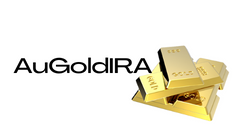The recent divergence in U.S. Treasury yields, with shorter-term yields decreasing while longer-term yields are increasing, has garnered significant attention in financial markets. This shift offers valuable insights into macroeconomic conditions and potential strategies for Bitcoin investors navigating uncertain times.
Treasury Yield Dynamics
Treasury yields indicate the return investors require to hold U.S. government debt, serving as a crucial gauge for the economy and monetary policy expectations. Here's an overview of the current scenario:
Short-term Yields Decline
The decline in short-term Treasury bond yields, like the 6-month yield, suggests market expectations of potential rate cuts by the Federal Reserve in response to economic slowdown risks or lower inflation forecasts.
Rising Long-term Yields
Conversely, the increase in yields on longer-term bonds, such as the 10-year Treasury yield, signals growing concerns about sustained inflation, fiscal deficits, or higher-term premiums demanded by investors for holding long-duration debt.
This disparity in yields often indicates a changing economic landscape, prompting investors to adjust their portfolios accordingly.
Significance for Bitcoin Investors
Given Bitcoin's unique attributes as a non-sovereign, decentralized asset, it is particularly sensitive to macroeconomic trends. The prevailing yield environment could influence Bitcoin in various ways:
Inflation Hedge Appeal
Higher long-term yields may point to persistent inflation worries. Bitcoin has historically been viewed as a hedge against inflation and currency devaluation, potentially heightening its attractiveness to investors seeking wealth preservation.
Risk-On Sentiment
Decreasing short-term yields might indicate looser financial conditions ahead. A more accommodative monetary policy often fosters a risk-on atmosphere, benefiting assets like Bitcoin as investors pursue higher returns.
Financial Instability Hedge
Divergence in yields, especially if leading to an inverted yield curve, can indicate economic instability or recession risks. During such periods, Bitcoin's narrative as a safe-haven asset and alternative to traditional finance could gain traction.
Liquidity Considerations
Lower short-term yields lower borrowing expenses, potentially boosting liquidity in the financial system. This liquidity often spills over into risk assets, including Bitcoin, fueling upward price momentum.
Broader Market Insights
The impact of yield divergence extends beyond Bitcoin to other segments of the financial ecosystem:
Stock Market
Reduced short-term yields typically benefit equities by cutting borrowing costs and bolstering valuation multiples. However, increasing long-term yields may pressure growth stocks, especially those sensitive to higher discount rates.
Debt Sustainability
Heightened long-term yields raise financing costs for governments and corporations, potentially straining heavily indebted entities and creating repercussions across global markets.
Economic Outlook
The divergence may mirror market expectations of slower near-term growth alongside longer-term inflationary pressures, signaling potential stagflation risks.
Takeaways for Bitcoin Investors
For Bitcoin investors, comprehending the interplay between Treasury yields and macroeconomic trends is crucial for well-informed decision-making. Here are key considerations:
Monitor Monetary Policy
Stay updated on Federal Reserve pronouncements and economic indicators. A dovish shift could benefit Bitcoin, whereas tighter policies might pose short-term obstacles.
Diversify and Hedge
Rising long-term yields could introduce volatility across asset classes. Diversifying into Bitcoin within a broader portfolio strategy may offer protection against inflation and economic uncertainties.
Leverage Bitcoin's Narrative
Amid fiscal deficits and monetary easing, Bitcoin's narrative as a non-inflationary store of value gains significance. Educating new investors on this story could drive increased adoption.
The divergence in Treasury yields reflects evolving market expectations concerning growth, inflation, and monetary policy—factors with wide-reaching implications for Bitcoin and broader financial markets. Understanding these dynamics and positioning appropriately can unveil opportunities to leverage Bitcoin's distinct role in a swiftly evolving economic environment. As always, staying informed and proactive is essential for navigating these intricate times.
For continuous access to real-time data, sophisticated analytics, and exclusive content, visit BitcoinMagazinePro.com.
Disclaimer: This article serves solely for informational purposes and does not constitute financial advice. Readers are advised to conduct thorough independent research before making investment decisions.
Frequently Asked Questions
What precious metal should I invest in?
The answer to this question depends on how much risk you are willing to take and what type of return you want. Gold has been traditionally considered a haven investment, but it's not always the most profitable choice. If you are looking for quick profits, gold might not be the right investment. If patience and time are your priorities, silver is the best investment.
If you don’t want to be rich fast, gold might be the right choice. If you are looking for a long-term investment that will provide steady returns, silver may be a better choice.
How to Open a Precious Metal IRA?
First, you must decide if your Individual Retirement Account (IRA) is what you want. Once you have decided to open an Individual Retirement Account (IRA), you will need to complete Form 806. You will then need to complete Form 5204 in order to determine which type IRA you are eligible. This form should not be completed more than 60 days after the account is opened. Once you have completed this form, it is possible to begin investing. You may also choose to contribute directly from your paycheck using payroll deduction.
To get a Roth IRA, complete Form 8903. Otherwise, the process will be identical to an ordinary IRA.
To be eligible for a precious metals IRA, you will need to meet certain requirements. The IRS stipulates that you must have earned income and be at least 18-years old. For any tax year, your earnings must not exceed $110,000 ($220,000 for married filing jointly). Contributions must be made on a regular basis. These rules apply regardless of whether you are contributing directly to your paychecks or through your employer.
You can use a precious metals IRA to invest in gold, silver, palladium, platinum, rhodium, or even platinum. You can only purchase bullion in physical form. This means you can't trade shares of stock and bonds.
Your precious metals IRA may also be used to invest in precious-metal companies. This option is offered by some IRA providers.
There are two major drawbacks to investing via an IRA in precious metals. First, they are not as liquid or as easy to sell as stocks and bonds. It's also more difficult to sell them when they are needed. Second, they are not able to generate dividends as stocks and bonds. Therefore, you will lose money over time and not gain it.
Is gold a good investment IRA option?
Gold is an excellent investment for any person who wants to save money. It's also a great way to diversify your portfolio. But gold has more to it than meets the eyes.
It's been used throughout history as a currency, and even today, it remains a popular form of payment. It is often called “the most ancient currency in the universe.”
But gold, unlike paper currency, which is created by governments, is mined out from the ground. Because it is rare and difficult to make, it is extremely valuable.
The price of gold fluctuates based on supply and demand. If the economy is strong, people will spend more money which means less people can mine gold. Gold's value rises as a result.
On the flip side, when the economy slows down, people hoard cash instead of spending it. This causes more gold to be produced, which lowers its value.
This is why gold investment makes sense for both individuals and businesses. If you invest in gold, you'll benefit whenever the economy grows.
Additionally, you'll earn interest on your investments which will help you grow your wealth. Plus, you won't lose money if the value of gold drops.
How much gold do you need in your portfolio?
The amount of capital that you require will determine how much money you can make. You can start small by investing $5k-10k. As you grow, you can move into an office and rent out desks. So you don't have all the hassle of paying rent. Only one month's rent is required.
You also need to consider what type of business you will run. My website design company charges clients $1000-2000 per month depending on the order. You should also consider the expected income from each client when you do this type of thing.
You won't get a monthly paycheck if you work freelance. This is because freelancers are paid. You may get paid just once every 6 months.
Before you can determine how much gold you'll need, you must decide what type of income you want.
I recommend starting with $1k-$2k of gold and growing from there.
Should you Invest In Gold For Retirement?
This will depend on how much money and whether you were able to invest in gold at the time that you started saving. You can invest in both options if you aren't sure which option is best for you.
Gold offers potential returns and is therefore a safe investment. It's a great investment for retirees.
While many investments promise fixed returns, gold is subject to fluctuations. Because of this, gold's value can fluctuate over time.
This doesn't mean that you should not invest in gold. You should just factor the fluctuations into any overall portfolio.
Another advantage of gold is its tangible nature. Gold is more convenient than bonds or stocks because it can be stored easily. It can also be carried.
As long as you keep your gold in a secure location, you can always access it. Physical gold is not subject to storage fees.
Investing in gold can help protect against inflation. You can hedge against rising costs by investing in gold, which tends to rise alongside other commodities.
Additionally, it will be a benefit to have some of your savings invested into something that won't lose value. When the stock market drops, gold usually rises instead.
Gold investment has another advantage: You can sell it anytime. Like stocks, you can sell your position anytime you need cash. You don't even need to wait for your retirement.
If you do decide to invest in gold, make sure to diversify your holdings. Do not put all your eggs in one basket.
Don't buy too many at once. Start by purchasing a few ounces. Then add more as needed.
It's not about getting rich fast. Instead, the goal here is to build enough wealth to not need to rely upon Social Security benefits.
Gold may not be the most attractive investment, but it could be a great complement to any retirement strategy.
Statistics
- If you accidentally make an improper transaction, the IRS will disallow it and count it as a withdrawal, so you would owe income tax on the item's value and, if you are younger than 59 ½, an additional 10% early withdrawal penalty. (forbes.com)
- Gold is considered a collectible, and profits from a sale are taxed at a maximum rate of 28 percent. (aarp.org)
- Contribution limits$6,000 (49 and under) $7,000 (50 and up)$6,000 (49 and under) $7,000 (50 and up)$58,000 or 25% of your annual compensation (whichever is smaller) (lendedu.com)
- Instead, the economy improved, stocks rebounded, and gold plunged, losing 28 percent of its value in 2013. (aarp.org)
- This is a 15% margin that has shown no stable direction of growth but fluctuates seemingly at random. (smartasset.com)
External Links
investopedia.com
law.cornell.edu
- 7 U.S. Code SS7 – Designation of boards for trade as contract markets
- 26 U.S. Code SS 408 – Individual retirement funds
bbb.org
finance.yahoo.com
How To
Investing in gold vs. investing in stocks
Investing in gold as an investment vehicle might seem like a very risky proposition these days. This is because many people believe that gold investment is no longer profitable. This belief arises because most people believe that the global economy is driving down gold prices. People believe that investing in gold would result in them losing money. However, investing in gold can still provide significant benefits. Below we'll look at some of them.
Gold is the oldest known form of currency. It has been in use for thousands of year. It has been used as a store for value by people all over the globe. It's still used by countries like South Africa as a method of payment.
The first point to consider when deciding whether or not you should invest in gold is what price you want to pay per gram. If you're interested in buying gold bullion, it is crucial that you decide how much per gram. If you don't know your current market rate, you could always contact a local jeweler and ask them what they think the price is.
It's also important to note that, although gold prices are down in recent months, the costs of producing it have risen. So, although gold prices have declined in recent years, the cost of producing it has not changed.
The amount of gold that you are planning to purchase is another important consideration when deciding whether or not gold should be bought. If you intend to only purchase enough gold to cover your wedding rings it may be a smart decision to not buy any gold. It is worth considering if you intend to use it for long-term investment. If you sell your gold for more than you paid, you can make a profit.
We hope this article has given you an improved understanding of gold investment tools. It is important to research all options before you make any decision. Only then will you be able to make an informed decision.
—————————————————————————————————————————————————————————————-
Based on [POSTTITLE]
by [POSTAUTHOR]

















